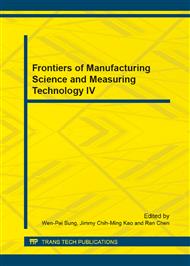p.2104
p.2108
p.2112
p.2116
p.2120
p.2125
p.2130
p.2134
p.2139
Research on Episode Segmentation for MIS Workflow
Abstract:
In this paper, a Bayesian method for fusing multiple visual cues is proposed for MIS (Minimally Invasive Surgery) workflow segmentation. The proposed technique investigates the characteristics of four basic events in MIS including idle, retraction, cauterisation and suturing. Visual cues related to shape, deformation, changes in light reflection, and other low level image features are fused using a Bayesian framework to achieve a high classification accuracy. Detailed in vivo experiments have been conducted to assess the accuracy and practical value of the technique.
Info:
Periodical:
Pages:
2120-2124
Citation:
Online since:
August 2014
Authors:
Keywords:
Price:
Сopyright:
© 2014 Trans Tech Publications Ltd. All Rights Reserved
Share:
Citation:


